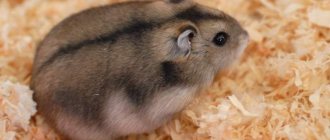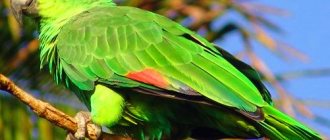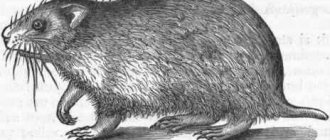Hamsters are playful, interesting animals. They come in different breeds. You can buy a Syrian hamster in Russia at a price from 50 to 1800 rubles .
Syrian hamsters belong to the class of mammals. They have medium and large sizes. The body length of adult individuals can reach 13-19 cm . Females are always larger than males. Life expectancy at home is 1-3 years . These animals feed on dry food.
Syrian hamsters have short legs, a stocky body, rounded ears, and a small rounded muzzle. The first breeders of this breed were the British. Thanks to their work, Syrian domestic rodents of different colors appeared. Under natural conditions, such hamsters live in Turkey, Asia, and Iran. They are found in steppes, meadows and grain fields.
You may need to buy a Syrian hamster for the following purposes:
- As a pet.
- For breeding and selling offspring.
- As a gift to family and friends.
How much does it cost to keep a hamster monthly?
Essentially, the cost of a hamster will be low. You will only need to buy him food and change his bedding.
- Dry food will cost you about 200–500 rubles.
- Fresh – fruits, vegetables – about 300 rubles.
- The filler will cost around 150 rubles.
The total for each month will be approximately 650 - 1000 rubles.
Djungarian hamster eats seeds
Types of Dzungars and their prices
Unlike other breeds of hamsters, Djungarian hamsters are not divided into short-haired and long-haired . Their fur is equally thick and the hairs are of medium length. Among Djungarian hamsters, there are decorative varieties obtained through selection that differ in color. There are red, sapphire and pearl-white individuals of decorative dzhungarikas. Specially bred hamsters are more expensive than regular ones, sometimes twice their price. For them the buyer will have to pay about 500-1000 rubles .
Decorative hamsters are more demanding in terms of living conditions, are susceptible to stress and are less resistant to disease.
Where is it profitable and safe to buy a hamster?
The most expensive purchase will cost you in a specialized pet store or nursery (approximately 200–400 rubles).
But you don’t have to worry about the “quality” of your pet – the purchase will be the safest. Also in this case, you can skip the point about the availability of vaccinations: they will be available.
But buying secondhand may be a bad idea. This is a dangerous idea - you don't know what you end up buying. However, the cost of such an acquisition will be the lowest - about 150 rubles.
Buying on the market is also not the best option: no one will know in what conditions the future hamster lived and whether he is healthy.
Photo of a Syrian hamster
There is also the option of acquiring a new friend from friends whose hamster has given birth to offspring. If you know these people well. In what conditions does a hamster live, what is the situation in the family - why not?
It is preferable to choose the option of purchasing from nurseries.
Varieties
You can choose a hamster by gender:
- Female.
- Male.
Depending on age, you can buy:
- Small.
- An adult hamster.
Depending on the availability of documents, you can purchase a rodent:
- With veterinary passport.
- Without a veterinary passport.
Hamsters with documents are more expensive.
Depending on the color there are hamsters:
- Golden.
- Cream.
- Black.
- Smoky.
- Beige.
- Yellow-brown.
- White.
- Lilac.
- Dark gray.
- Brown.
- Silvery.
- Chocolate.
- Satin.
- Honey.
- Gray.
There are monochromatic and multi-colored individuals: for example, white-cream or black-brown. Multi-colored colors come in the following types:
- With a belt.
- Spotted with a belt.
- Tortoiseshell with white.
- Roan.
- Tortoiseshell.
Depending on the length of the coat there are individuals:
- Long-haired.
- Short-haired.
- Hairless, bald.
You can buy a rodent in this way:
- At the pet market.
- From the breeder.
- At the pet store.
- In the nursery.
- At the animal shelter.
- In the online store.
- According to a private advertisement on the Internet or in a newspaper.
The most expensive purchase will be at a pet store. The cheapest way to buy a rodent is through a private advertisement.
Possible additional expenses
For a small resident, additional expenses should be provided, such as vaccinations or unexpected treatment at a veterinary clinic.
It is advisable to perform a scheduled inspection once every 3 months.
Also, after some operations, medical supervision will be necessary to prevent possible complications.
Hamster in a cage
Prices at different clinics can vary greatly. The most inexpensive ones will be where there are general doctors, i.e. - specialize in animals.
There will be no doctor who deals specifically with hamsters. This option is quite affordable (about 350 rubles for an examination, an ambulance - about 700 rubles).
But will you be sure that everything is okay with your pet? Will the doctor do any harm? However, if your furry friend becomes ill, this option will still be better than nothing.
Before you buy a hamster, you should buy a house and other accessories
Clinics that have specialized doctors will cost more - about 1000 rubles. for an ambulance, 500 rubles for an examination, approximately 700 rubles. for a set of hygiene procedures.
- Nail cutting, around 300 rub.
- In case of incurable diseases, sometimes it is better to euthanize the animal so that it does not suffer, this will cost 1000 rubles.
- Castration or sterilization – 2000 rub.
- Get rid of lice eaters - 1000 rub.
Unfortunately, few doctors, due to lack of qualifications in this industry, are simply not ready to examine and treat a hamster. Therefore, before purchasing, you need to find out in advance whether there are such specialists in your city.
Djungarian hamster
Djungarian or Siberian hamsters belong to the hamster . Individuals of this breed are small, with thick fur, a pointed muzzle and black bulging eyes. A distinctive feature of dzhungariks is their color. These furry rodents have a dark stripe on their back. The main color can be different (usually gray).
Siberian hamsters are common in Mongolia, Kazakhstan, western Siberia and northwestern China. Rodents of the family Macnopods are small in size, grow up to 5-10 cm and weigh about 40-50 grams . Djungarians are very sociable and funny, well suited for keeping at home, however, it is difficult to accustom them to certain actions.
Why are there different prices for hamsters?
The cost depends on various factors. An adult hamster will cost less. But the minus here is different - he has already formed his character and certain habits.
Very small hamsters are difficult to handle. However, they may be cheaper. But they require appropriate additional care. Often males and females do not differ in price. It all depends on the breed. More “pure” breeds will cost more than regular hamsters.
Siberian hamster
The most common breeds are Djungarians and Syrians. Their cost is approximately the same and inexpensive. They easily get along in an apartment with small children and, with rare exceptions, are non-aggressive.
These breeds are not whimsical and should not cause problems for the owner.
But with hamsters of other breeds it will be a little more complicated. Firstly, finding such varieties will be quite problematic. Secondly, their character is not so flexible and tame.
Factors influencing price
The cost of a Syrian hamster is influenced by many factors. Therefore, its price varies widely. When compiling a price list, sellers take into account the following points:
- Age.
- Purebred breed.
- Availability of a veterinary passport and other documents.
- Health status.
- Character.
- Gender.
- Delivery required.
- Place of purchase.
Females are more expensive than males . You will have to pay extra for the delivery of the animal. Purebred individuals are valued higher than crosses of different breeds. Tame, kind rodents have a higher price than aggressive ones that do not make contact with humans. The more famous the seller, the higher his price will be.
Necessary accessories for a pet's life
Before you buy a hamster and bring it into your home, you need to take care of housing and other accessories for a comfortable life. Let's find out how much all this costs?
| Name | Price |
| Cell | 1000–3500 rub. |
| Drinking bowl | 150–350 rub. |
| Bowl, 2 pcs required. (for dry and wet food) | 100–250 rub. |
| Dry food | 300–800 rub. |
| Filler | 150–500 rub. |
| Sand for swimming and bath (only for dwarfs) | 300/150 rub. |
| Cabin or hammock | 150–600 rub. |
| Wheel | 300–450 rub. |
| Chalk or mineral stone | 300 rub. |
These are the basic, mandatory things that you need to buy right away. Over time, you can additionally buy toys:
- labyrinth - 350 rub.
- ball - 500 rub.
Walking ball for a hamster
You may also need a carrier if the hamster needs to be taken to a veterinary clinic or given to friends during the holidays. The average cost is 1700–3000 rubles.
You need to first make an investment in your hamster's housing. After the main purchases for the home, the only monthly purchases will be food and litter for the rodent.
What determines the price of Djungarian hamsters?
The cost of hamsters depends mainly on where they are sold. In the Russian Federation, fluffy dwarfs can be bought by hand, at the market, in a pet store or in a nursery. The cheapest option is to buy at the market, where hamsters are sold for 50-200 rubles . However, in this case, you need to pay attention to the pet’s health status, as well as its age. If an animal is offered that is 1-2 years old, it is better to refuse immediately, since the life expectancy of the dzhungarika is very short - only 2-3 years.
Dzhungars sold by breeders and individuals cost approximately 100-200 rubles For this price you can buy a tamed and well-groomed hamster. Private owners, as well as some pet stores, sometimes give away cubs for free. The reason for this is most often that a lot of babies are born, and it becomes difficult to support them. But it must be remembered that Dzungars are ready for independent life separately from their mother only from the age of one month.
In pet stores and nurseries, dzhungariki can be sold for 300-500 , and sometimes even 1000 rubles . The reasons for such a high price include the presence of documents on the rodents being sold. Moscow pet stores are more expensive.
Purchasing a furry animal entails other expenses. You need to buy your hamster a cage, litter and food for the first time. The total cost of these expenses will be about 2000-7000 rubles (depending on the selected cell). Keeping your pet is much cheaper.
Examples of the cost of Siberian hamsters
The Dzungarian breed is relatively small, so representatives of this species are a little more expensive. If you buy a Djungarian hamster at a pet store, you can also purchase a cage at the same time. An ordinary gray jungar, 1 month old, including a cage, will cost about 600-700 rubles . But this price is only relevant if the cage is for transportation. If you buy a decorative cage with a hamster, the purchase will cost 3,000-10,000 rubles . If you buy a decorative animal without a house, you will need to pay about 500-1000 rubles, the cost together with the cage will be approximately 4000-11000 .
The price of an ordinary hamster along with a regular cage and food for a month will be approximately 1000 rubles . If you add filler to the above, the purchase will cost 1000-1200 rubles . You can also buy a wheel, paying 200-300 rubles more.
If you buy a walking ball for your fluffy, the costs will increase by 500 rubles. As a result, an ordinary hamster in an ordinary cage with all additional expenses will cost 1800-2000 rubles, and a decorative animal in a metal cage will cost 1800-2000 rubles. 5000-12000.











